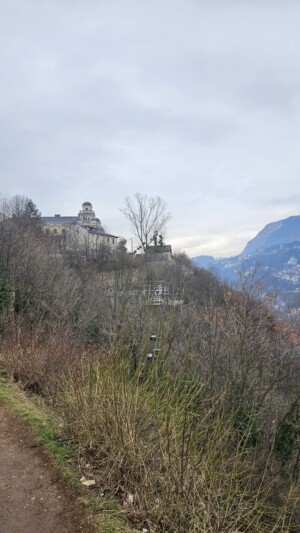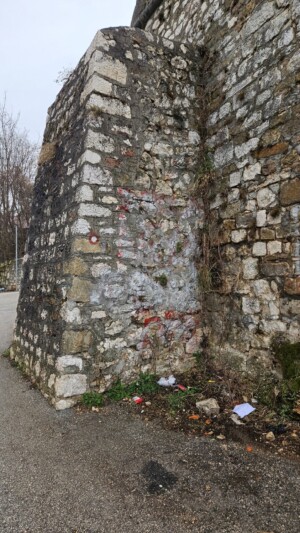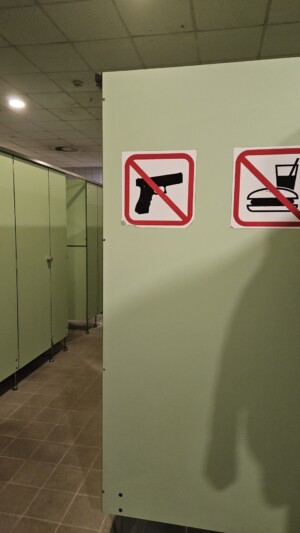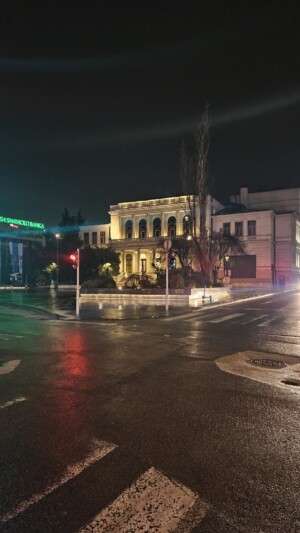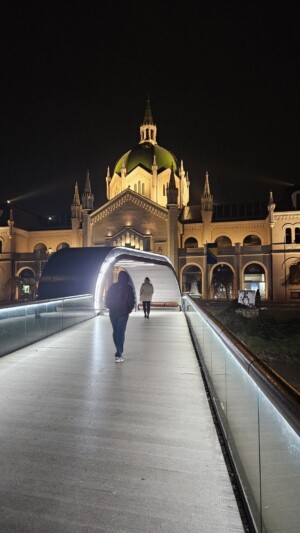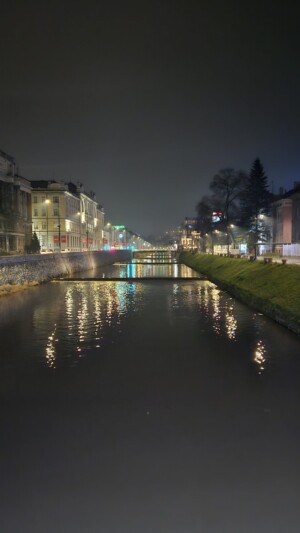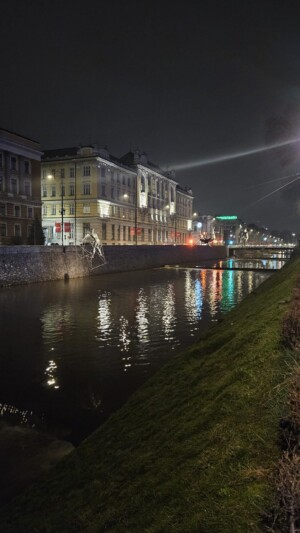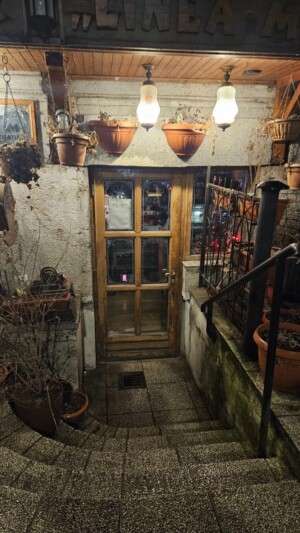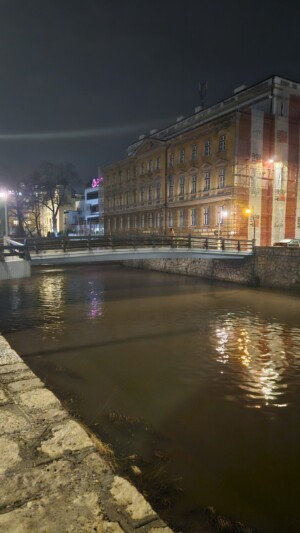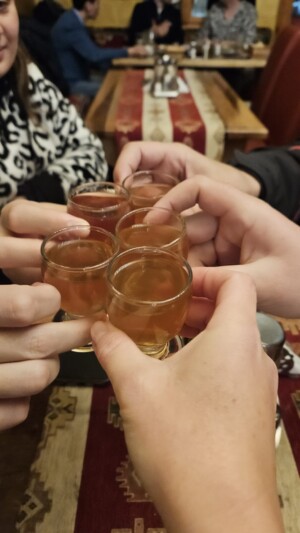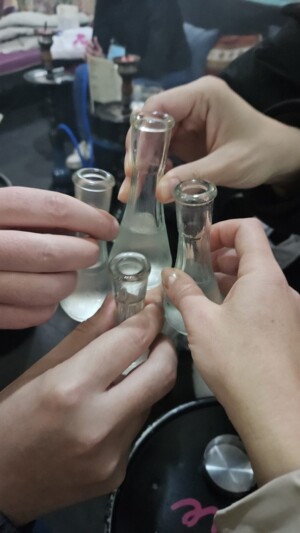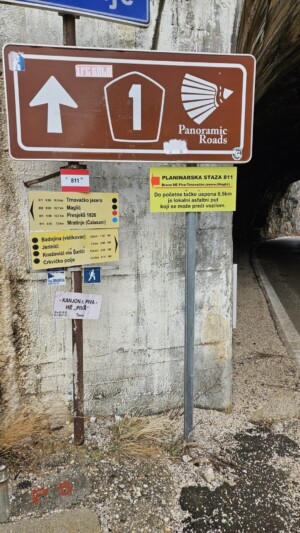Day 2
The next morning, on Sunday, the weather changed dramatically: the sun that had warmed us with its rays the day before disappeared behind dense gray clouds. It was overcast, and from time to time, a light drizzle began. However, this did not stop us from heading to breakfast on the same Baščaršija street. In one of the local fast-food establishments, we ordered a meat pie, chicken fillet, and, of course, ćevapi—a traditional Balkan dish.
Before breakfast, I promised to treat everyone to a traditional Eastern drink—salep. This fragrant and warming beverage is especially popular in Turkey, where I first learned about it. Finding a place that served it was not difficult. We stepped into another cozy little café, once again immersing ourselves in the atmosphere of the old town. Enjoying the leisurely morning and the taste of salep, we fully embraced the new day. I must note that the drink was well received by everyone in our group.
After a hearty breakfast, we decided to stick to our plan and went to the local thermal complex Ilidža Thermal Riviera. According to official information, it is located on thermal springs. But before diving into organized relaxation, we decided to visit a natural spring on the Željeznica River, where hot mineral water emerges naturally. We had learned about this place during the trip planning stage and found it without any trouble. However, what we saw was disappointing: there was a lot of trash lying around, and the place itself seemed abandoned. The water was indeed hot and rich in minerals, and the smell of sulfur was quite strong. In warmer weather, one could take healing baths, as it seems some of the local homeless people do.
Then we went to the organized bathing facility. The entrance fee was 12 km, and beer inside cost 5 km. Visitors had access to pools, several jacuzzis, jet massages, and an unusual cave with interesting acoustic effects. There were few people, and even fewer children. Overall, everything looked quite decent, though not new—there were signs of wear and some areas of dirt. The lack of a spa zone was disappointing: saunas were available only for an additional fee of 15 euros per person. Moreover, the air was saturated with the smell of chlorine, which, as a preventive medicine specialist, I consider more of a plus than a minus. However, we did not feel the expected natural thermal warmth of the water. Despite this, we managed to relax, swim, and enjoy the jacuzzi.
Andrey, of course, did not accompany us—water procedures are not on his list of pleasures. Besides, he would hardly have been allowed into the facility fully dressed and with his laptop.
After returning home and picking up Andrey, we went out for dinner.
The day before, we had noticed a restaurant with bright decor and a large area, which is quite unusual for the historic center, especially for Baščaršija Street. The menu offered exclusively halal dishes, with a focus on traditional cuisine, but no alcohol. However, smoking was not allowed there, which we really appreciated. The only surprising thing was that the restroom was located outside, and the path to it was not the most convenient.
After a delicious dinner, we went on another walk. Baščaršija roughly divides the city into two parts: the eastern side, with traditional shops, craft workshops, and sweets, and the western side, dominated by modern boutiques, banks, and restaurants. This contrast is particularly noticeable when strolling along the pedestrian street.
Our route then took us along the riverbank to enjoy views of the bridges – Čobanija Bridge, Drvenija Bridge, Festina lente (bridge), Latin Bridge, etc., most of which are pedestrian-only. However, Sunday in Sarajevo had a surprise for us: all the stores were closed, and our home supply of alcohol was limited to just three bottles of beer—not nearly enough. We set out in search of a kiosk or gas station, but even the gas stations were closed. In one kiosk, unfortunately, we found neither alcohol nor even cigarettes. So, we had no choice but to continue admiring the bridges.
After our walk, our tired travel companions decided to stop at a café and continue tasting local rakija. However, by 10:00 PM, many places were already closing. We went into a hookah lounge—the one with the fewest visitors and, therefore, the least smoke. No one in our group was particularly into hookah, but we did try the rakija. The cornelian cherry rakija did not impress us, but the traditional grape rakija, served in national-style measuring cups, was quite enjoyable. They even served us water, which one of our group members especially appreciated.
Back at home, we drank tea with local sweets—lokum and baklava, watched a podcast featuring me on the Youtube channel @Омут_Агориста (shoutout to Jose Birkin), and then went to bed. In the morning, we had a long journey ahead.
Day 3
On Monday, we checked out of our apartment and decided to have breakfast at a shopping mall. We chose the main one—Sarajevo City Center. However, it turned out to be rather small and unimpressive. In the huge building, only three floors were designated for shopping, and the store selection was quite mediocre. Another surprise awaited us: in the supermarket Konzum on the -1 floor, there was no alcohol at all—only non-alcoholic beer and cider. So, we couldn’t bring any Sarajevo beer back for our followers.
Leaving the city, we passed by a massive Christian cemetery. In the center of Sarajevo, during our walks, we had also noticed the “Sarajevo Roses“—marks from shell craters filled with red paint in memory of those who died during the war.
The road home was lively despite the rain. We were stopped by the road police, and when asked why one of our tires was a summer tire, Dima calmly replied, “Pukla je guma,” which means “The tire burst.” Seeing chains in the trunk, the inspector seemed quite satisfied.
Fixing the car in the rain turned out to be a rather messy task. The icicles in the tunnels had already melted, but we still made a short stop to touch the snow.
And finally, we returned to Podgorica.
Many thanks to everyone who read these posts.
Ahead, you can look forward to stories on “Following the Tracks of Dubioza Kolektiv in Sarajevo” and “The Unique Art of Coining on Silver, Gold, and Copper.”
P.S. And we are always looking for new routes. by the way, the beginning of these routes in the last photo goes through a real tunnel!








